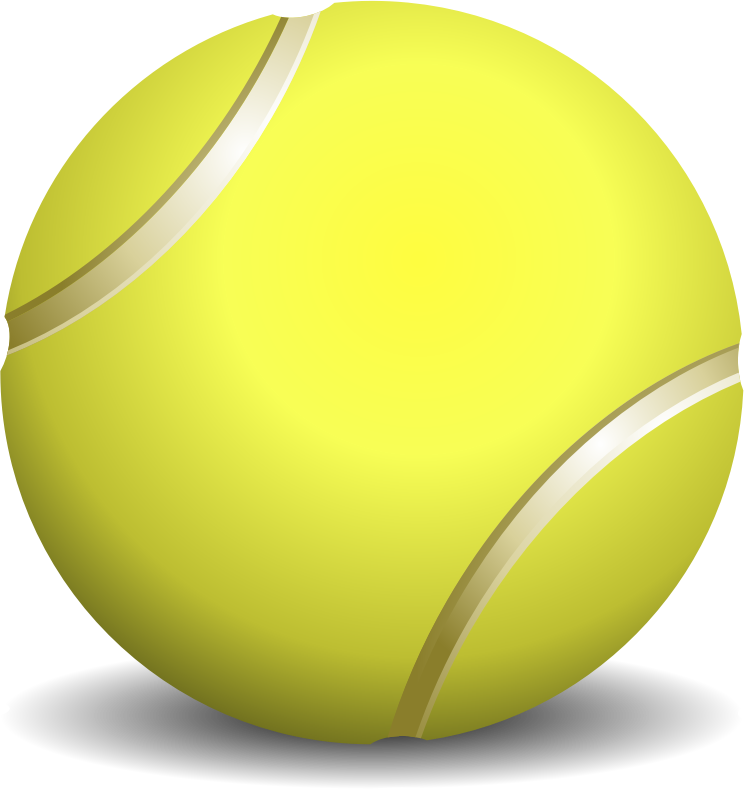
This image has format transparent PNG with resolution 744x789.
You can download this image in best resolution from this page and use it for design and web design.
Tennis ball PNG picture with transparent background you can download for free, just click on download button.
A tennis ball is a small, hollow ball used in professional and recreational games of tennis. Tennis balls are fluorescent yellow in organized competitions, but in recreational play other colors are also used. Tennis balls are covered in a fibrous felt, which modifies their aerodynamic properties, and each has a white curvilinear oval covering it.
Modern tennis balls must conform to certain size, weight, deformation, and bounce criteria to be approved for regulation play. The International Tennis Federation (ITF) defines the official diameter as 6.54–6.86 cm (2.57–2.70 inches). Balls must have masses in the range 56.0–59.4 g (1.98–2.10 ounces). A tennis ball generally has 12 pounds per square inch (80 kPa; 0.8 atm) more of a nitrogen and oxygen mixture than the sea level ambient air pressure. Yellow and white are the only colors approved by the ITF. Most balls produced are a fluorescent color known as "optic yellow", first introduced in 1972 following research demonstrating they were more visible on television. What color to call the ball is mildly controversial; one poll showed that a little less than half of people consider this color yellow, while a slight majority consider it green.
Tennis balls are filled with air and are surfaced by a uniform felt-covered rubber compound. Tennis ball felts comprise wool, nylon, and cotton in a mixture surrounding the rubber edge. The felt delays flow separation in the boundary layer which reduces aerodynamic drag and gives the ball better flight properties. Often, the balls will have a number in addition to the brand name. This helps distinguish one set of balls from another of the same brand on an adjacent court.
Tennis balls begin to lose their bounce as soon as the tennis ball can is opened. Tennis balls lose bounciness because the air inside the ball is pushing harder when a can is opened compared to when a ball is packaged. When packaged, the pressure in the can equally pushes the ball from the outside as the air inside the balls, preserving the pressure inside. When a tennis ball is unpackaged, its frequent use allows for air to escape from the ball. They can be tested to determine their bounce. Modern regulation tennis balls are kept under pressure (approximately two atmospheres) until initially used; balls intended for use at high altitudes have a lower initial pressure, and inexpensive practice balls are made without internal pressurization. A ball is tested for bounce by dropping it from a height of 254 cm (100 inches) onto concrete; a bounce between 135 and 147 cm (53 and 58 inches) is acceptable if taking place at sea-level and 20 °C (68 °F) with relative humidity of 60%; high-altitude balls have different characteristics when tested at sea level.
In this page you can download free PNG images: Tennis ball PNG images free download